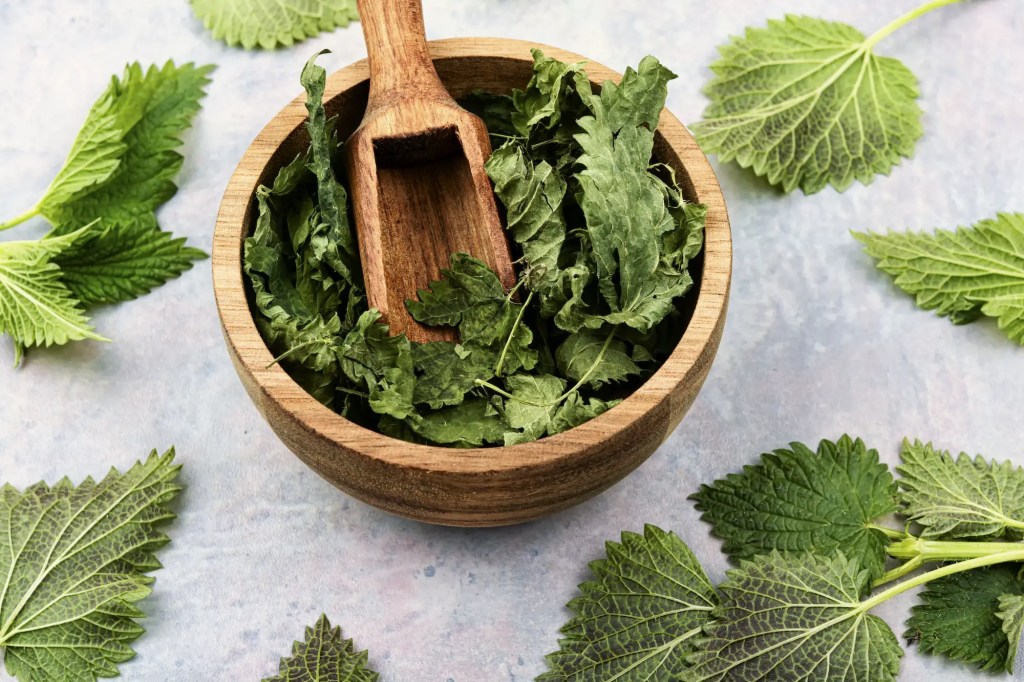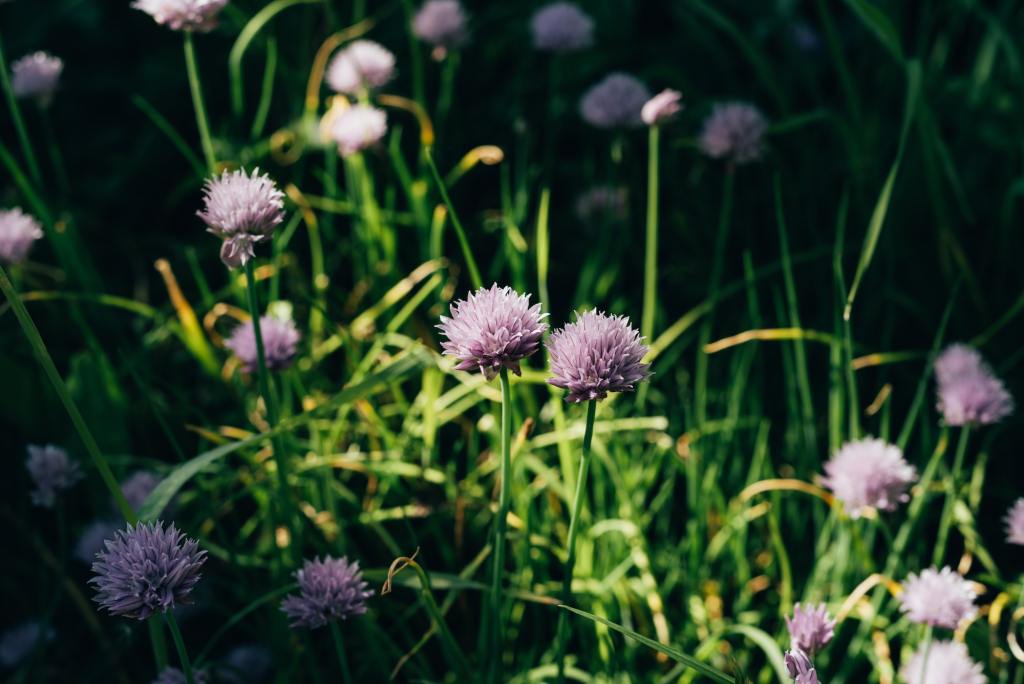Spring is a season of renewal, and with it comes the opportunity to forage for fresh herbs that can add flavor and nutrition to your meals. Foraging is a great way to connect with nature, and it can also be a fun and rewarding activity. Whether you’re a seasoned forager or a beginner, there are plenty of herbs to discover in the springtime.
Foraging for herbs in the spring can be a great way to add variety to your diet and incorporate new flavors into your cooking. Many herbs that are commonly foraged in the spring have medicinal properties as well, making them a great addition to your herbal medicine cabinet. It’s important to remember, however, that not all plants are safe to eat, and it’s crucial to properly identify any herbs before consuming them.
Some commonly foraged herbs in the spring include dandelion, plantain, yarrow, and ground ivy. These herbs can be used in a variety of ways, from adding flavor to salads and soups to making herbal teas and tinctures. With a little bit of knowledge and caution, foraging for herbs in the spring can be a fun and rewarding experience that connects you with the natural world.
Why Forage in Spring?
Spring is the perfect time to forage for herbs and plants. After the long winter, plants start to grow again, and the fresh, new growth is full of nutrients and flavors. Here are a few reasons why you should consider foraging in spring:
- Freshness: The new growth in spring is fresh and full of flavor. The leaves and flowers of many plants are at their peak in the spring, making them perfect for foraging.
- Nutrition: Spring plants are packed with nutrients. Many plants, such as dandelion and chickweed, are high in vitamins and minerals.
- Free: Foraging is a great way to get free food. Instead of buying expensive herbs and vegetables at the grocery store, you can find them for free in nature.
- Connection to Nature: Foraging is a great way to connect with nature. It’s a chance to get outside, explore, and appreciate the beauty of the natural world.
Of course, it’s important to be careful when foraging. Make sure you know what you’re picking and that it’s safe to eat. If you’re unsure, consult a field guide or an expert before consuming any wild plants.
Safety Considerations
Foraging for herbs in spring can be a fun and rewarding experience, but it’s important to keep safety considerations in mind to avoid any potential risks. Here are some key points to keep in mind:
- Know what you’re looking for: Before heading out to forage, make sure you have a good understanding of the herbs you’re looking for. Familiarize yourself with their appearance, habitat, and any potential lookalikes to avoid any accidental ingestion of toxic plants.
- Harvest from safe areas: Avoid harvesting herbs from areas that may be contaminated with pollutants or chemicals. Stick to areas that are free from pesticides and other harmful substances.
- Ask for permission: If you’re foraging on private land, always ask for permission from the landowner before harvesting any herbs. Respect any signs or guidelines that may be posted in the area.
- Use proper equipment: Make sure you have the appropriate gear for foraging, including gloves, sturdy shoes, and a first aid kit. Bring a basket or bag to collect herbs, and avoid using plastic bags that can suffocate the herbs.
- Be aware of allergies: If you have any allergies or sensitivities, make sure to research the herbs you’re foraging for and avoid any potential triggers.
- Properly identify herbs: Take the time to properly identify the herbs you’re harvesting. If you’re unsure, consult a field guide or seek advice from an experienced forager or herbalist.
By keeping these safety considerations in mind, you can ensure a safe and enjoyable foraging experience in the springtime.
Top 10 Herbs to Forage in Spring
1. Nettles

Nettles are a highly nutritious herb that can be foraged in the spring. They are rich in vitamins and minerals, including iron, calcium, and magnesium. Nettles can be used to make tea, soup, or pesto. They can also be added to smoothies or used as a substitute for spinach in recipes.
2. Dandelion
Dandelion is a common weed that is often overlooked, but it is actually a highly nutritious herb. The leaves, flowers, and roots of the dandelion can all be used for medicinal purposes. Dandelion leaves can be added to salads or used to make tea. The flowers can be used to make wine, and the roots can be roasted and used as a coffee substitute.
3. Chickweed
Chickweed is a mild-tasting herb that can be used in salads or as a garnish. It is high in vitamins and minerals, including vitamin C and iron. Chickweed can also be used to make tea or infused oil. It has anti-inflammatory properties and can be used to soothe skin irritations.
4. Garlic Mustard
Garlic mustard is a flavorful herb that can be used in a variety of dishes. It has a garlicky flavor and can be used to add flavor to soups, stews, and sauces. Garlic mustard is high in vitamins A and C and can also be used for medicinal purposes. It has antibacterial properties and can be used to treat infections.
5. Wild Onion

Wild onion is a pungent herb that is similar to chives. It can be used to add flavor to salads, soups, and stews. Wild onion is high in vitamins A and C and can also be used for medicinal purposes. It has antibacterial properties and can be used to treat colds and flu.
6. Wild Garlic
Wild garlic, also known as ramsons or bear’s garlic, is a pungent herb that can be used to add flavor to a variety of dishes. It has a similar taste to garlic and can be used in place of garlic in recipes. Wild garlic can be used in salads, soups, and sauces.
It is high in vitamins A and C and can also be used for medicinal purposes. It has antimicrobial properties and can be used to treat infections.
7. Dock
Dock is a leafy green herb that is high in vitamins and minerals, including vitamins A and C, calcium, and potassium. It has a slightly sour taste and can be used in salads, soups, and stews.
Dock leaves can also be used to make tea or infused oil. Dock has astringent properties and can be used to treat skin conditions like eczema.
8. Cleavers
Cleavers, also known as sticky weed, is a mild-tasting herb that can be used in salads or as a garnish. It is high in vitamins and minerals, including vitamin C and iron. Cleavers can also be used to make tea or infused oil. It has diuretic properties and can be used to help flush toxins from the body.
9. Wild Violet
Wild violet is a small, delicate herb that has a slightly sweet taste. The leaves and flowers can be used in salads or as a garnish. Wild violet can also be used to make tea or infused oil. It has anti-inflammatory properties and can be used to soothe skin irritations.
10. Sorrel
Sorrel is a sour-tasting herb that can be used in salads, soups, and sauces. It is high in vitamins and minerals, including vitamin C and potassium. Sorrel leaves can also be used to make tea or infused oil. Sorrel has astringent properties and can be used to help heal wounds.
Other herbs to forage in the spring include fiddlehead ferns, purslane, dock, and ramps. These herbs are all highly nutritious and can be used in a variety of dishes.
How to Forage and Use Herbs
Foraging for herbs is a fun and rewarding activity that can provide you with fresh ingredients for cooking and natural remedies for various ailments. Here are some tips to help you get started:
- Research the herbs you want to forage before heading out. Make sure you can properly identify them and know how to use them.
- Choose an area that is free from pesticide and herbicide exposure and potential contamination.
- Bring a field guide or a knowledgeable companion to help you identify the herbs.
- Use scissors or a knife to cut the herbs, leaving enough of the plant to ensure it can continue to grow.
- Wash the herbs thoroughly before using them.
Once you have foraged your herbs, you can use them in a variety of ways:
Culinary Uses for Foraged Herbs
Many herbs can be used in cooking to add flavor and nutrition to your dishes. Here are some ideas:
- Use fresh herbs in salads, sandwiches, and wraps.
- Add herbs to soups, stews, and casseroles.
- Make herbal teas by steeping fresh or dried herbs in hot water.
- Create herb-infused oils and vinegars to use in dressings and marinades.
Medicinal Uses
Herbs have been used for centuries for their medicinal properties. Here are some common uses:
- Chamomile can be used to soothe digestive issues and promote relaxation.
- Peppermint can help relieve headaches and aid in digestion.
- Nettle can be used to treat allergies and reduce inflammation.
- Calendula can be used to heal wounds and soothe skin irritations.
Remember to always consult with a healthcare professional before using herbs for medicinal purposes, especially if you have a pre-existing condition or are taking medication.
The Take Away
Foraging for herbs in the spring can be a fun and rewarding activity for those who enjoy spending time outdoors and learning about nature. Not only can you find edible and medicinal plants, but you can also connect with the natural world and gain a deeper appreciation for the environment around you.
Some of the most commonly foraged herbs in the spring include dandelion, nettle, chickweed, and yarrow. These plants are all highly nutritious and have a variety of medicinal uses. However, it’s important to remember that not all plants are safe to eat or use for medicinal purposes. Always do your research and make sure you know what you’re picking before you consume or use it.
Additionally, it’s important to forage responsibly and sustainably. Only take what you need, and be mindful of the impact you’re having on the environment. Avoid picking endangered or protected species, and never forage on private property without permission.
In conclusion, foraging for herbs in the spring can be a fun and educational activity, but it’s important to do it safely and responsibly. With a little bit of knowledge and preparation, you can enjoy the many benefits of foraging while also protecting the environment and the plants that call it home.


